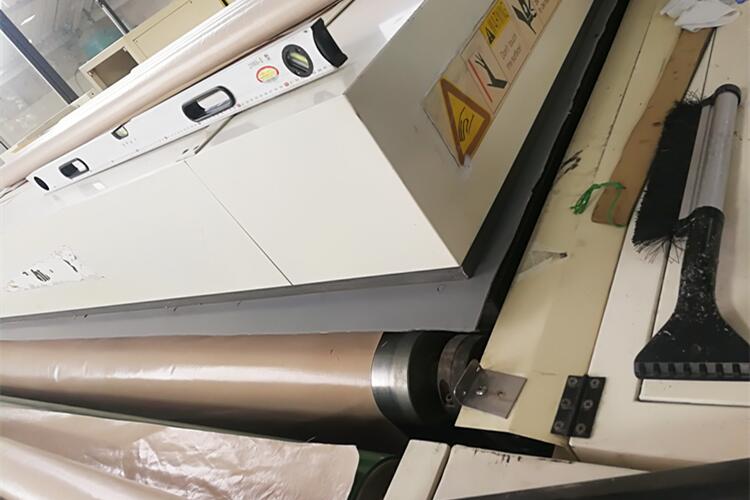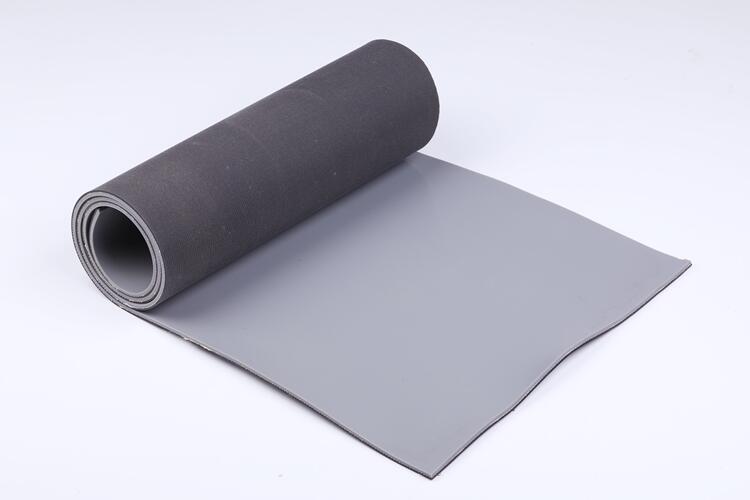The demand for PV panels is on the rise, and as a result, solar module laminators are being pushed to their limits to meet production targets and increase profits. This puts a strain on the silicone diaphragms within the machines, which must be strong enough to withstand the increased output and cycles. To ensure maximum efficiency and productivity, it is crucial that these silicone sheets are durable and reliable.
In this blog post, we will explore the various types of silicone membranes available in the renewable energy market and how to get the right one for your solar panel laminator. We will also discuss the determining factors that need to be considered during the lamination process and provide tips for evaluating the quality and properties of solar diaphragms.
Whether you are a PV panels manufacturer, an engineer, or a professional in the solar industry, this guide will offer you with comprehensive knowledge and insights to help you make informed decisions when picking the best silicone sheet for solar module laminators.
So let’s dive in!
What Are Solar Silicone Diaphragms?

Solar silicone diaphragms are flexible membranes made from specialized silicone polymers for use in photovoltaic panels production. They possess superior properties such as elasticity, insulation, corrosion and heat resistance, enabling them to withstand high pressure and temperature conditions during lamination. They are engineered specifically to meet the requests of many solar panel manufacturers, making them an essential component in the production of solar panels.
Benefits of Silicone Rubber Membrane for Solar Panel Industry
(1) Improved product quality and reliability in solar panels production due to the superior properties of this silicone sheet.
(2) Increased efficiency and speed of the lamination process, resulting in higher output and profitability.
(3) Resistance to high temperatures and pressure, ensuring the diaphragm can withstand the demanding conditions of solar models production.
(4) Greater flexibility, allowing for easier handling and positioning within the laminator.
(5) Reduced maintenance and replacement costs, as silicone diaphragms have a longer lifespan compared to other rubber materials.
(6) Excellent release properties, meaning that they release the laminated materials easily without sticking, which reduces waste and improves efficiency.
Types of Solar Laminator Silicone Diaphragms
Based on my knowledge and analysis of the current market, there are various types of silicone membranes available for use in solar panel industry. The main differences are mainly reflected in areas, such as material, color, thickness, and mechanical properties.
However, in terms of appearance, there are three main types.
Silicone Thread-Reinforced Diaphragms/Sheets

The reinforced diaphragms made from a combination of fabric(mesh) and silicon rubber are known for their exceptional strength and durability. These materials possess high tear and elasticity properties, which make them perfect for daily high-volume lamination frequencies and laminating thicker crystalline solar panels.
Compared to other membrane materials available in the market, the reinforced silicone sheets have a longer lifespan and can withstand more strenuous output and cycles. Therefore, they are highly recommended for industrial applications that require reliable and long-lasting performance.
Non-Reinforced Silicone Diaphragms
100% made entirely of high strength silicone, these silicone rubber sheets are suitable for low-volume lamination procedures or for laminating thinner solar panels. If you have a limited budget, they are good solar silicone membranes at affordable prices.
To be honest, its service life is far less than reinforced diaphragms. This is the main reason why it is not recommended by some suppliers.
Custom Solar Diaphragms

These diaphragms are made to order and can be customized to fit specific solar module sizes or shapes. They are ideal for manufacturers who require a bespoke solution for their solar modules lamination.
In this case, the price is usually more expensive than both of the above. Normally, there is a MOQ limit.
Factors to Consider When Choosing a Silicone Sheet for Solar Module Laminator
After knowing the three kinds of solar silicone membranes, maybe you are ready to buy one. But before that, several factors should be considered in advance.
Size
The size of a silicone sheet should be much larger than the working area of a solar module laminator. So it can fully cover all PV modules.
Thickness
The thickness of the diaphragm will impact the pressure applied in the lamination equipment. Thicker solar membranes will provide higher pressure but may also increase the risk of uneven pressure distribution.
Standard thicknesses are 3mm, 4mm and 5mm available.
Temperature resistance
The diaphragm should be able to withstand the high temperatures(170℃) required for the heating process without degrading or losing its properties. Here, a silicone rubber sheet is the preferred choice.
Chemical resistance
The diaphragm needs to be able to withstand exposure to harsh unwanted chemicals during the lamination process. This includes solvents and adhesives, which can leave behind corrosive residues that may damage the PV modules if it is not resistant enough.
Cost
The cost of silicone membranes should be considered, as it can impact the overall cost of solar panel production. If you are relatively well financed, there are a variety of products for your selection.
Brands of your solar laminator
Normally, solar diaphragms are designed to fit many well-known brands of solar module laminator like Spire, Burkle, NPC, Meier, 2BG, Ecoprogetti, 3S, Komax, Electro Solar, Spaleck-Stevens, Nisshinbo, P-Energy, Mondragon, Boostsolar, Orient, ZST, etc. Just give us a call or inquiry to talk about your application and processes to determine which diaphragm you should be getting.

Tips for Evaluating Silicone Membranes’ Quality and Performance
Silicone diaphragms come in various qualities, and it can be challenging to determine which one is the best for your needs. In case you are in a dilemma, here are some prompts for assessing the quality and performance of solar silicone membranes.
Material quality
The material quality of the silicone rubber membrane is crucial to its performance. It should be made of high-quality silicone compounds that is resistant to high temperatures, abrasion, and tear. A good silicone membranet should also have a consistent thickness and a relatively smooth surface finish.
Elongation and tensile strength
The composing materials should have a high elongation and tensile strength, which means it can stretch without breaking or tearing. This property is particularly important in high-volume lamination processes, where the diaphragm is subjected to repeated cycles of pressure and heat.
Tear resistance
The PV membranes should be able to withstand tearing and puncturing during the laminating and heating process. The tear resistance can be evaluated by measuring the force required to tear the diaphragm and the elongation at tear.
Consistency
The quality of the silicone membrane should be consistent from batch to batch. Inconsistent quality can lead to problems during the lamination and affect the performance of the solar panels. Therefore, it’s essential to work with a supplier who can provide consistent quality diaphragms.
Quality testing
Request information from the supplier about the diaphragm’s quality testing, including any specific technical data sheet. This can help ensure the silicone rubber sheet is reliable and meets your needs.
Which Silicone Membrane is Best for Solar Industry?
Well, that is a really tricky question!
Now that we have looked at the different types of silicone diaphragms shown above, their properties, and you also know some factors to consider before make a purchase, let’s compare some of the best silicone membranes available on the market.
The S5 Gen EVA-Resistant Silicone Rubber Sheet
4.0mm Thick, 2ply – Grey silicone side smooth, black hybrid side textured

Technical Data
| Durometer | combination of 60° and 70° shore A |
| Elongatio | 180% |
| Max. Seamless Width | 3500mm |
| Max Temperature | 250°C / 482°F |
The S2 Silicone Rubber Diaphragm
Grey, Durometer 70
4.0mm Thick, both sides smooth or one side textured

Technical Data
| Duromete | 70° +/- 2° Shore A |
| Elongation | 600% |
| Max. Seamless Width | 3500mm |
| Max Temperature | 250°C / 482°F |
If you are unsure about which type to choose, it would be best to discuss it over the phone. Factors to consider include the type of encapsulant, the composition and size of the modules, and the type of laminator.
Where to Buy Quality Silicone Diaphragms?
Now that you know what to look for when choosing a silicone diaphragm for your solar modules lamination, the next step is finding a reputable supplier or manufacturer.
Here are some tips to help you get started:
Research suppliers online
Use search engines to find companies that specialize in manufacturing or supplying silicone diaphragms for solar module laminators. Look for companies that have been in business for a while and have a strong reputation for quality products and customer service.
Check supplier reviews
Look for reviews from previous customers to get an idea of their experience working with the supplier. This can help you gauge the supplier’s reliability, responsiveness, and overall quality.
Ask for samples
Before making a large order, ask for some samples of the membrane silicone you are interested in. This will give you a chance to test their quality and compatibility with your specific laminator model.
Compare prices
Compare prices from multiple suppliers to ensure you are getting a competitive price for the quality of the product. After all, we all want to buy good quality products at a good price.
Consider local suppliers
If possible, try to find a local supplier to reduce shipping costs and lead times.
To help you save time on searing, we list three reputable suppliers of these solar silicone diaphragms as below:
China Deer Hunter
Steinbach
J-Flex
By following these tips and researching different suppliers, I’m sure you can find a high strength rubber diaphragm for your solar laminator that meets your needs and budget.
How to Install Silicone Diaphragms on Solar Laminators
Installing a silicone diaphragm on your solar laminator is a straightforward process, but it’s important to follow the manufacturer’s instructions carefully to ensure proper installation and prevent damage to the diaphragm or laminator.
Here is a step-by-step guide for placing a solar diaphragm on a lamination equipment:
Remove the old diaphragm
If you are replacing an existing diaphragm, carefully remove it from the laminator.
Clean the laminator
Clean the surface of the laminator where the diaphragm will be installed to remove any dirt, debris, or acidic fumes are emitted from adhesive or other components.
Prepare the new diaphragm
Before putting the new diaphragm, inspect it for any defects or damage. Trim the diaphragm to the appropriate size if necessary.
Apply PTFE sheet
Apply a thin layer of Teflon cloth to the surface of the diaphragm, that will extend the life cycles.
Pre-heat the diaphragm
In order to maximise its performance, the diaphragm requires preheating for 1-2 hours without any PV panels involved.
Maintenance and Care for Your Silicone Diaphragm
To ensure the longevity and effectiveness of your silicone diaphragm, it is important to properly maintain and care for it.
Regularly inspect the diaphragm for any signs of wear or damage, such as cracks or tears.
Clean the diaphragm regularly with a mild soap and water solution, and avoid using harsh chemicals or abrasive materials that could damage the surface.
Store the diaphragm in a cool, dry place when not in use, and avoid exposing it to extreme temperatures or direct sunlight.
By taking these simple steps, you can extend the life of your silicone diaphragm and improve the quality of your laminating process.
Conclusion
If you’re in the business of manufacturing solar PV panels, you know how important it is to have the right silicone diaphragm in the lamination process.
In today’s article, we shared some useful knowledge about solar diaphragms, and also suggest some popular models that are hot selling for solar industry around the world.
Next, I want to hear from you.
Do you think this post is useful for you to make a purchase?
Are you ready to evaluate a diaphragm as a trial order?
Or you are still a little confused about how and where to buy?
Just send messages to me according to the right table sheet or directly contact me to email sales@cndeerhunter.com or via Mobile/Whatsapp/Wechat: +86-13823789007.



